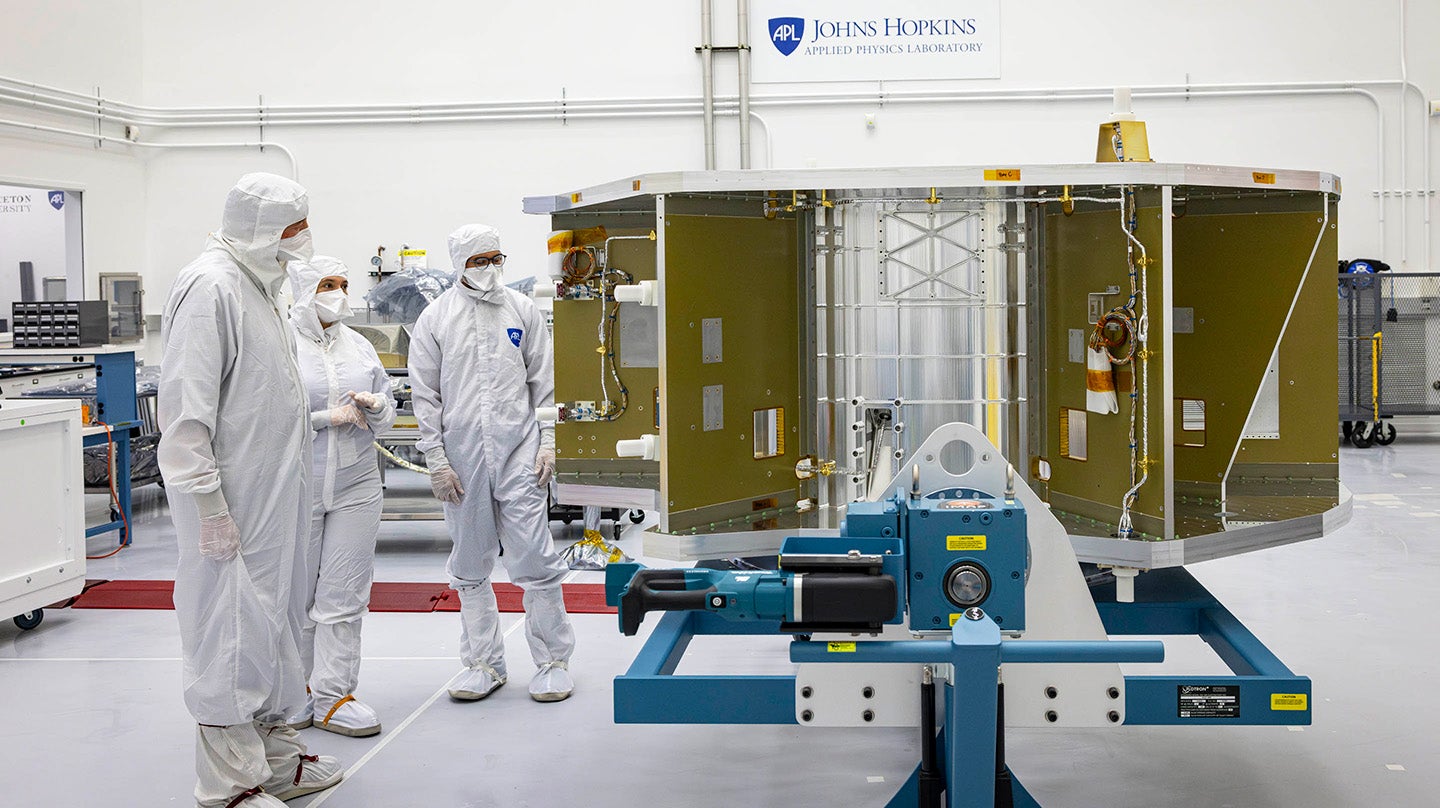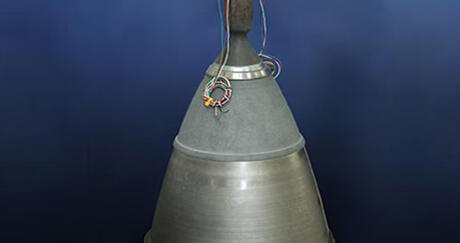The Interstellar Mapping and Acceleration Probe (IMAP), which will investigate two of the most important issues in space physics today, made an important stop at Aerojet Rocketdyne’s site in Redmond, Washington, before its 2025 launch.
As the sole propulsion provider on IMAP, Aerojet Rocketdyne, an L3Harris Technologies company, recently integrated the propulsion subsystem to the spacecraft for the Johns Hopkins Applied Physics Laboratory, who is building the spacecraft and will operate it after launch. IMAP will investigate the acceleration of energetic particles and interaction of the solar wind with the interstellar medium.
"Aerojet Rocketdyne was in top form for this integration,” said Seth Kijewski, IMAP Propulsion Subsystem Lead at APL. “It’s really an exemplary display of what a hardworking, committed team can accomplish.”
The propulsion subsystem is comprised of three propellant tanks, two service valves, two latch valves, two system filters, and 12 MR-111G monopropellant rocket engines modules. Thermal control features were also integrated to the spacecraft. With the completion of this milestone, NASA is now one-step closer to flying the mission.
“During the four-month integration effort, there was a strong customer presence, which made it a very collaborative effort,” said Jack Deboer, IMAP program manager at Aerojet Rocketdyne. “Aerojet Rocketdyne is critical to this program and our thrusters will play a major role in helping scientists understand the risks posed to astronauts and technological systems that fly in space.”

NASA’s IMAP in the Johns Hopkins Applied Physics Laboratory’s clean room, where the spacecraft will undergo testing and building over the next year
Image Credit: Johns Hopkins APL
IMAP will explore our solar neighborhood, helping researchers better understand what happens at the boundary of the heliosphere, where the Sun’s protective magnetic influence ends. With its extensive set of 10 instruments, the spacecraft will observe a vast range of particle energies and types in interplanetary space to simultaneously investigate two of the most important overarching issues in heliophysics – the energization of charged particles from the Sun, and interaction of the solar wind with the winds from other stars and other material that fills our galaxy.
IMAP will explore our solar neighborhood, helping researchers better understand what happens at the boundary of the heliosphere, where the Sun’s protective magnetic influence ends. With its extensive set of 10 instruments, the spacecraft will observe a vast range of particle energies and types in interplanetary space to simultaneously investigate two of the most important overarching issues in heliophysics – the energization of charged particles from the Sun, and interaction of the solar wind with the winds from other stars and other material that fills our galaxy.
“Aerojet Rocketdyne delivered the IMAP spacecraft to the customer ahead of the contract schedule,” added Deboer. “Ahead of schedule is always a bonus for a mission that has such an important job to do in understanding and decoding the messages in particles from the Sun and beyond.”
Princeton University professor and principal investigator David J. McComas leads the mission with an international team of 25 partner institutions. APL is managing the development phase, building the spacecraft, and will operate the mission. IMAP is the fifth mission in NASA’s Solar Terrestrial Probes (STP) Program portfolio. The Explorers and Heliophysics Projects Division at NASA’s Goddard Space Flight Center in Greenbelt, Maryland, manages the STP Program for the agency’s Heliophysics Division of NASA’s Science Mission Directorate.

